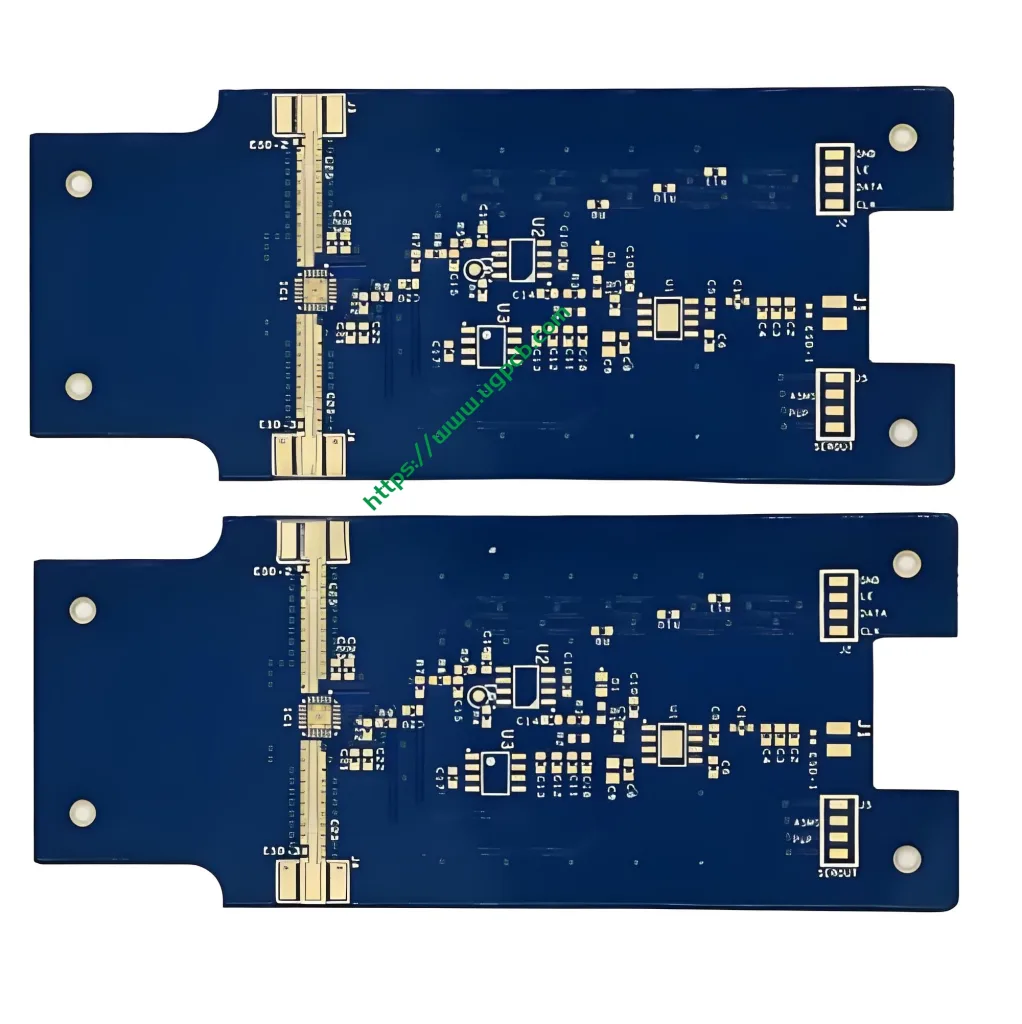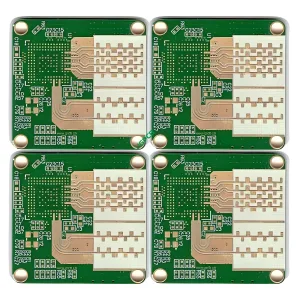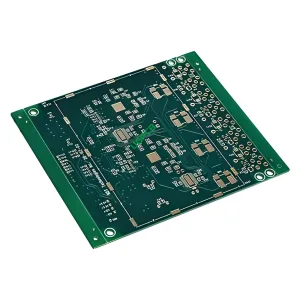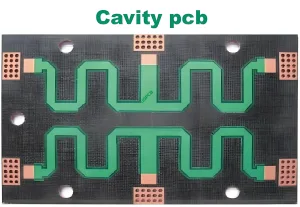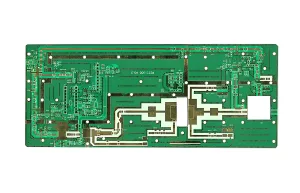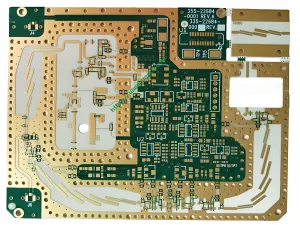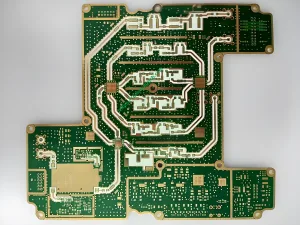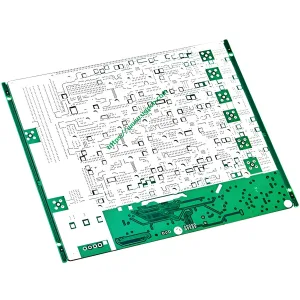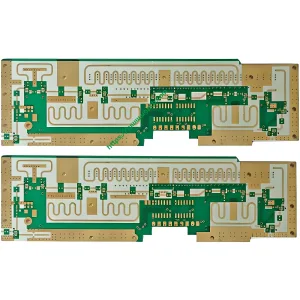Descripción general de Teflon PCB
PCB de teflón, conocido por su rendimiento excepcional en aplicaciones de alta frecuencia, es un tipo de placa de circuito impreso (tarjeta de circuito impreso) que utiliza material laminado de teflón. Este material se elige por sus propiedades dieléctricas superiores, Haciéndolo ideal para microondas y dispositivos electrónicos de alta frecuencia. La calidad de los PCB de teflón generalmente se adhiere a los estándares IPC6012 Clase II o Clase III, Asegurar un rendimiento confiable y consistente.
Definición y especificaciones clave
Una PCB de teflón se define por el uso de teflón como material dieléctrico, que ofrece una constante dieléctrica que va desde 2.0 a 3.5. Estos tableros se pueden fabricar con un recuento de capa que van desde 2 a 34 capas, Proporcionar flexibilidad para diversas complejidades en el diseño de circuitos. El grosor de los PCB de teflón puede variar de 0.1 mm a 12 mm, atender a diferentes necesidades de aplicación. El grosor de cobre generalmente comienza con una base de 0.5 oz y se puede terminar hasta 1 oz, Asegurar una conductividad adecuada para las señales de alta frecuencia.
Consideraciones de diseño
Al diseñar pcbs de teflón, Se deben considerar varios factores clave:
- Constante dieléctrica (Dk) y factor de disipación (df): Los materiales deben tener valores precisos de DK y DF para garantizar la integridad de la señal y minimizar la pérdida a altas frecuencias.
- Recuento de capas y grosor: Dependiendo de la complejidad del circuito, El número de capas y el grosor general se pueden ajustar dentro de los rangos especificados.
- Espesor de cobre: El grosor adecuado del cobre es crucial para mantener una baja impedancia y reducir la pérdida de señal.
- Tecnología superficial: Opciones como Inmersion Gold e Isig (Inmersión de plata) están disponibles para acabados superficiales, cada uno ofrece diferentes beneficios en términos de conductividad y confiabilidad.
Principio de trabajo
Los PCB de Teflon funcionan en función del principio de la impedancia controlada y la pérdida de señal mínima, que es esencial para aplicaciones de alta frecuencia. La constante dieléctrica baja del material de teflón ayuda a mantener la integridad de la señal al reducir los retrasos de fase y la atenuación. Esto hace que los PCB de teflón sean particularmente adecuados para microondas y RF (Radiofrecuencia) Aplicaciones donde la pureza de la señal es crítica.
Aplicaciones
La aplicación principal de PCB de Teflon está en el campo de microondas y electrónica de alta frecuencia. Se utilizan en dispositivos como sistemas de radar, Comunicaciones por satélite, y otros componentes de RF donde el alto rendimiento y la confiabilidad son primordiales. La capacidad de manejar altas frecuencias con una pérdida mínima hace que los PCB de teflón sean una excelente opción para estas aplicaciones exigentes.
Clasificación
Los PCB de teflón se pueden clasificar en función de su recuento de capa, espesor, y aplicaciones específicas. Las clasificaciones comunes incluyen:
- Tablas de una sola cara y de doble cara: Para aplicaciones más simples con menos capas.
- Tablas de múltiples capas: Para circuitos más complejos que requieren múltiples capas de interconexiones.
- Tablas específicas de alta frecuencia: Diseñado específicamente para aplicaciones de microondas y RF, a menudo con requisitos estrictos sobre propiedades del material y precisión de fabricación.
Propiedades del material
Las propiedades únicas del teflón lo convierten en un material ideal para PCB de alta frecuencia:
- Constante dieléctrica baja: Ayuda a reducir el retraso y la pérdida de la señal.
- Rendimiento estable a través de rangos de temperatura: Asegura un rendimiento constante en diferentes condiciones ambientales.
- Alta resistencia a la absorción de humedad: Previene la degradación de la calidad de la señal debido a la entrada de humedad.
Proceso de producción
La producción de PCB de teflón implica varios pasos:
- Selección de material: Elegir el material de teflón apropiado basado en los valores requeridos de DK y DF.
- Diseño de circuito: Creación del diseño del circuito con consideraciones para un rendimiento de alta frecuencia.
- Aguafuerte: Eliminar cobre innecesario para crear el patrón de circuito deseado.
- Laminación: Unir múltiples capas juntas bajo alta presión y temperatura.
- Acabado de superficies: Aplicar la tecnología de superficie elegida, como el oro de inmersión o el isig.
- Prueba y control de calidad: Asegurar que el producto final cumpla con todas las especificaciones y estándares.
Use escenarios
Los PCB de Teflon se utilizan en escenarios donde el rendimiento de alta frecuencia es crítico, como:
- Antenas de microondas: Para una transmisión y recepción de señal eficientes.
- Comunicaciones por satélite: Asegurar la transferencia de datos confiable entre la Tierra y el espacio.
- Sistemas de radar: Proporcionar capacidades precisas y estables de procesamiento de señales.
En conclusión, Los PCB de Teflon son placas de circuito especializadas diseñadas para aplicaciones de alta frecuencia, ofreciendo excelentes propiedades dieléctricas e integridad de la señal. Su diseño, materiales, y los procesos de producción se adaptan para cumplir con los requisitos estrictos de las tecnologías de microondas y RF.
 UGPCB LOGO
UGPCB LOGO

